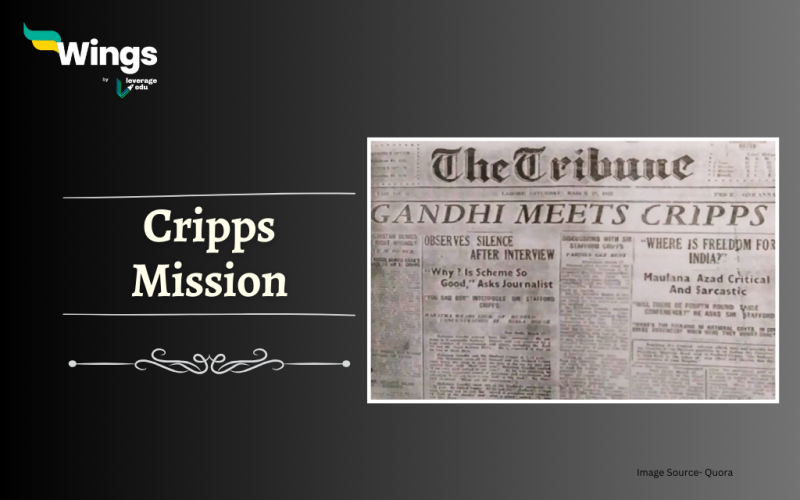Cripps Mission was one of the efforts of Britain to hold on to India which was slipping from its grip of colonialism. The Japanese soldiers were fast moving towards the eastern borders of India. This was expected to be an invasion by the Japanese over India. Along with this, as Britain had sent Indian soldiers to the Second World War without consulting the parties, the political leaders of India especially from Congress protested this move and started revoking their posts to show disagreement.
Table of Contents [show]
This led to a large unrest, moreover, the allied powers urged Britain to gain assistance from India. Pressurised and feared by both the invasion from the Japanese and the disagreement of the Indians the British sent their envoy Cripps to handle the situation. The mission pursued by Cripps came to be known as the Cripps Misson.

Also Read – The Cabinet Mission Came To India In The Year___?
Purpose of Cripps Mission
Stafford Cripps and Lord Privy Seal along with other leaders were sent on this mission to India. The sole purpose of this mission was to establish good relations to ensure support from India. Here is how it is divided into smaller proposals;
- Ensure collaboration and cooperation from Indians for the war.
- Also, a promise to independently form the dominion of India was made by the British.
- Indians were also promised to choose freely as to how they wanted to interact with the commonwealth and other international organisations after the war.
- It was resolved that a constituent assembly would be formed to look into further resolutions for conflict.
- Two main conditions were set for the formation of the Indian Union:
- Any province willing to remain independent from India and have a separate constitution would be allowed to do so.
- The British or Commonwealth will not possess any rights to object to the Indian constitution.
- During the period of transition of power, the Governor’s authority General will not exercise any power over India but the military will remain at the British command.

Also Read: What Was Subsidiary Alliance? Get Complete Results, Policies & Notes to Prepare
Significance of Cripps Mission
It was the first time that the British acknowledged the formation of an independent dominion of India.
- Moreover, Indians got the opportunity to draft their own constitution and form a proper constituent assembly.
- Also, even during the transition of power Indians were promised power and authority over large matters.
- However, the provision to declare independence unions allowed to the provinces result in the partition of India in 1947.
- But somewhere or the other, all this directly corresponded to the right to form a sovereign state.
Also Read – Who Were The Members Of The Cabinet Mission?
Objections Against Cripps Mission
There were loopholes in the provisions of the Cripps Mission. Following are the objections raised by the National leaders.
- There was no clarity on the matter of complete independence as the pact only mentioned a dominion status.
- Princely state representatives would be chosen by princes instead of being elected.
- The right to break off from India promised to the provinces threatened the unity of the country.
- No details or initiatives of power-sharing in the administration and defence were listed.
- The Muslim League criticised the idea of a single Indian union. They also backed out of forming the machinery to build the constituent assembly.
Also Read: Bardoli Satyagraha- A Historic Struggle for Justice
Failure of Cripps Mission
The British government was not ready to share or let go of its power over India. The confusing ideas unleashed great unrest in the country. On top of that India was closely facing a Japanese invasion they badly wanted to avoid. This led to Gandhiji calling out for the Quit India Movement.
That’s all about Cripps Mission! If you want to read more articles like this, you can get Study notes on the Modern History of India here. Also, you can visit our general knowledge page on Indian History!
 One app for all your study abroad needs
One app for all your study abroad needs















 45,000+ students trusted us with their dreams. Take the first step today!
45,000+ students trusted us with their dreams. Take the first step today!
